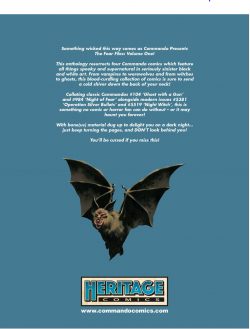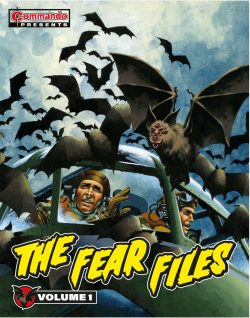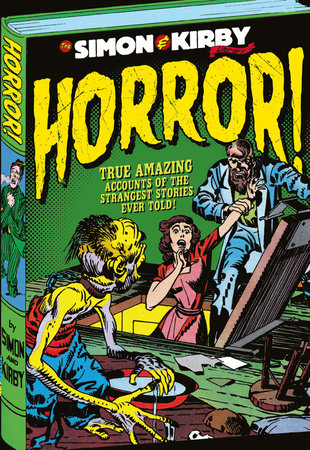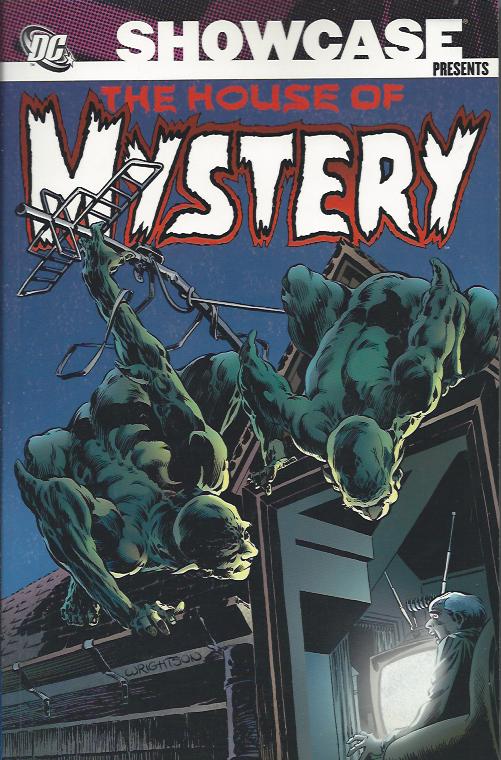
By Joe Orlando, Michael Fleischer, Maxine Fabe, Jack Oleck, John Albano, Sergio Aragonés, Steve Skeates, Mark Evanier, Robert Kanigher, George Kashdan, Doug Moench, Sheldon Mayer, E. Nelson Bridwell, John Jacobson, David Micheline, Gerard Conway, David Izzo, Dennis O’Neil, Marv Wolfman, John Broome, Paul Levitz, Bob Rozakis, Mark Hanerfeld, David Kasakove, Michael J. Pellowski, Martin Pasko, Bernie Wrightson, Michael William Kaluta, John Calnan, Murphy Anderson, Ruben Yandoc, Alex N. Niño, Romy Gamboa, Adolfo Buylla, Sonny Trinidad, Nestor Redondo, Rico Rival, Gerry Talaoc, Fred Carrillo, Tony DeZuñiga, Bernard Baily, Abe Ocampo, Alfredo Alcala, Frank Thorne, Frank “Quico” Redondo, Eufronio Reyes (E.R.) Cruz, Ralph Reese, Ramona Fradon, Frank Robbins, Bill Draut, Howard Purcell, Dick Dillin, Neal Adams, Mort Meskin, George Roussos, Frank Giacoia, Mike Sekowsky, Jack Kirby, Don Heck, Joe Giella, Jack Sparling, Pat Broderick, Leonard Starr, Carmine Infantino, Bernard Sachs, Bill Ely, Jess M. Jodloman, Curt Swan & George Klein, & various (DC Comics)
ISBN: 978-1-4012-2183-6 (TPB)
American comicbooks started slowly until the creation of Superman unleashed a torrent of creative imitation and invented a new genre: superheroes. Implacably vested in the Second World War, they swept all before them until the troops came home whereupon older genres supplanted the Fights ‘n’ Tights crowd.
Although new kids kept up the buying, much of the previous generation also retained their four-colour habit but increasingly sought older themes in the reading matter. The war years altered the psychology of humanity, and as a more world-weary, cynical young public came to see that all the fighting and dying hadn’t really changed anything their chosen forms of entertainment (film and prose as well as comics) reflected this. As well as Western, War and Crime comics, madcap escapist comedy and anthropomorphic funny animal features were immediately resurgent, but gradually another periodic revival of spiritualism and interest in the supernatural led to increasingly impressive, evocative and even shocking horror comics.
There had been grisly, gory and supernatural stars before, including a pantheon of ghosts, monsters and wizards draped in mystery-man garb and trappings (the Spectre, Mr. Justice, Sgt. Spook, Frankenstein, The Heap, Zatara, Dr. Fate and dozens more), but these had been victims of circumstance: the unknown as a power source for super-heroics. Now the focus shifted to ordinary mortals thrown into a world beyond their ken with the intention of unsettling, not vicariously empowering, the reader.
Almost every publisher jumped on the increasingly popular bandwagon, with B & I (which became the magical one-man-band Richard E. Hughes’ American Comics Group) launching the first regularly published horror comic in the Autumn of 1948, although Adventures Into the Unknown was technically pipped by Avon who had released an impressive single issue entitled Eerie in January 1947 before launching a regular series in 1951, by which time Classics Illustrated had already long milked the literary end of the medium with adaptations of The Headless Horseman, Dr. Jekyll and Mr. Hyde (both 1943), The Hunchback of Notre Dame (1944) and Frankenstein (1945) among others.
If we’re keeping score this was also the period in which Joe Simon & Jack Kirby identified another “mature market” gap and invented Romance comics with Young Romance #1, (September 1947) but they too saw the sales potential for spooky material, resulting in the seminal Black Magic (launched in 1950) and boldly obscure psychological drama anthology Strange World of Your Dreams (1952).
The company that would become DC Comics bowed to the inevitable and launched a comparatively straight-laced anthology that nevertheless became one of their longest-running and most influential titles with the December 1951/January 1952 launch of The House of Mystery. When the hysterical censorship scandal which led to witch-hunting hearings of the Senate Subcommittee on Juvenile Delinquency, April- June 1954 was curtailed by the industry adopting a castrating straitjacket of self-regulatory rules HoM and its sister title House of Secrets were dialled back into rationalistic, fantasy adventure vehicles. They even briefly became super-hero split-books (with Martian Manhunter and Dial H for Hero in HoM and Eclipso subletting with veteran mystic adventurer Mark Merlin – who latterly became Prince Ra-Man – in HoS).
However nothing combats censorship better than falling profits and as the 1960s waned the Silver Age superhero boom stalled and crashed, leading to surviving publishers agreeing to loosen their self-imposed restraints against crime and horror comics. Nobody much cared about gangster titles but as the liberalisation coincided with another bump in global interest in all aspects of the Worlds Beyond, resurrection of scary stories was a foregone conclusion and obvious “no-brainer”. Even ultra-wholesome Archie Comics re-entered the field with their Red Circle Thrillers…
Thus, with absolutely no fanfare at all issue #174, cover dated May-June 1968 presented a bold banner asking Do You Dare Enter The House of Mystery? whilst reprinting a bunch of admittedly excellent short fantastic thrillers originally seen in House of Secrets from those heady days when it was okay to scare kids.
With covers by Michael William Kaluta, Bernie Wrightson, Luis Dominguez, George Evans, Nick Cardy, Bill Draut, Alfredo Alcala & Gerry Talaoc, this second compilation reprints in moody monochrome the contents of The House of Mystery #212 to 226. The contents span cover-dates March 1973 to August/September 1974 and begin with ‘Ever After’ by unknown scribe and illustrators John Calnan & Murphy Anderson, wherein a ruthless chancer picks the wrong recently bereaved heiress to marry. Michael Fleischer, Maxine Fabe & Alex N. Niño’s ‘Oh Mom! Oh Dad! You’ve Sent Me Away to Summer Camp… and I’m So Sad!’ reveals a strange logic to why the kid in a wheelchair is being picked on by his supposed chums before the issue ends with Jack Oleck & Ruben Yandoc sharing a grim ride with a guilty passenger heading ‘Halfway to Hell!’
John Albano & Niño’s ‘Back from the Realm of the Damned’ opens #213 as a greedy son murders his stepfather and learns an eternally damning lesson. Although fear was key, fun was always the goal and the tales were interspersed with blackly comedic gag pages. Here, Sergio Aragonés delivers a bunch of sidesplitters in a ‘Cain’s Game Room’ segment. The pages – alternated with Page 13 and ‘Cain’s Gargoyles’ – provided painfully punny pranks (originally just by Aragonés but eventually supplemented by other cartoonists like John Albano, Lore Shoberg and John Costanza). The feature was popular enough to be spun off into bizarrely outrageous comic book Plop! – but that’s a subject for another day…
Here the terror is turned up after a married couple’s pleasant drive deposits them on ‘The Other Side!’ (Steve Skeates & Romy Gamboa), before Oleck & Adolfo Buylla reveal the fate of a modern day wizard who creates a slave ‘In His Own Image!’
HoM #214 leads with Oleck & Yandoc’s ‘Curse of the Werewolf’, as a trickster’s scheme founders when he picks the wrong target. Another visit with ‘Cain’s Gargoyles’ courtesy of Aragonés, brings us to Mark Evanier, Robert Kanigher & Sonny Trinidad’s tale of a daredevil and a thief who know exactly when they’re going to die thanks to ‘The Death Clock!’ A double dose of ‘Cain’s Game Room’ leads to the tale of pet-hater and her just fate in Skeates & Nestor Redondo’s ‘The Shaggy Dog.’
In #215, Fleischer, Fabe & Rico Rival’s ‘The Man Who Wanted Power over Women’ details how a lonely homely guy consults the wrong witch in his desire to be loved, and George Kashdan & Talaoc see an arrogant sculptor swear ‘Your Corpse Shall I Carve!’ in his ruthless search for the perfect muse. A fresh Aragonés ‘Cain’s Game Room’ page refreshes the palate for some ‘Brain Food’ as Fabe & Fred Carrillo detail how the dumbest kid in school becomes a supergenius…
Albano & Tony DeZuñiga’s ‘Look into My Eyes… and Kill!’ opens #216 in the saga of a paroled convict with new powers and old grudges before an anonymous writer joins veteran chill-crafter Bernard Baily visiting the ‘Graveyard Shift’ of a mean cab driver getting paid off in kind. A double bill of ‘Cain’s Game Room’ & ‘Cain’s Gargoyles’ takes us back to unhappy spouses as a weary wife makes herself a widow to run the family business herself: a very bad deal from Doug Moench & Abe Ocampo, as proven in ‘Special Sale: Canned Death ½ Off’…
HoM #217 has Sheldon Mayer & Nestor Redondo reveal the fate of an impressionable young thing who inherit a parcel of desert and learns ‘This Ghost Town is Haunted!’, and E. Nelson Bridwell & Talaoc ask carnival freaks/murders suspects ‘Hoodoo You Trust?’ before John Jacobson, Skeates & Alcala detail how wildlife in a swamp unite against encroaching humans in defence of their ‘Swamp God!’
Fleischer, Russel Carley & Talaoc open #218 with a small midwestern city and its avaricious murderous trash-handling subcontractor getting a well-deserved dose of ‘The Abominable Ivy!’ ‘Cain’s Game Room’ then ushers us into ‘An Ice Place to Visit!’ as Fleischer, Carley & Frank Thorne expose a contaminated cold store/ice-plant and what happens to the boss who hushed up the contagion’s source…
Bridwell & Bernie Wrightson launch #219 with pun-ishing intro ‘Welcome to The House of Mystery’, after which Fleischer & Alcala take us to Nazi-occupied Tunisia where the invaders systematically succumb to ‘The Curse of the Crocodile!’, whilst a ‘Pledge to Satan’ (Mayer & Nestor Redondo) sees a medieval witch-hunter romance and cheat the wrong woman…
Another ‘Welcome to The House of Mystery’ page – by Bridwell & Alcala – kicks off #220 followed by ‘They Hunt Butterflies, Don’t They?’ Fleischer & Alcala’s tale sees a greedy guide regret betraying his lepidopterist client before an Aragonés-curated visit to ‘Cain’s Game Room’ takes us to the end with exposure of ‘The Hunter!’ who stalks the infernal realms in a macabre safari by Albano & Niño…
Fleischer & Thorne reunite in #221 (January 1974) as killer clown ‘Pingo!’ fails to have the last laugh whilst – after a Cain’s Game Room’ interlude – Len Wein, Wrightson & Michael William Kaluta magnificently cap off the dread jollity with another motley yarn as ‘He Who Laughs Last…’ shows murdering conmen how close a family circus folk are…
Oleck & Frank (AKA Quico) Redondo open #222 with ‘Vengeance is Mine!’, as a resurrected vampire hunts the family of the man who staked him, making the greatest mistake of his renewed life. It’s counterbalanced by a surreal serial killer yarn as Fleischer & Alcala see justice done and foggy Victorian London relieved on ‘The Night of the Teddy Bear!’
Issue #223 (March and the last monthly issue for some time) launches with a whaling yarn by Wein & Eufronio Reyes Cruz. ‘Demon from the Deep!’ details the mutual hatred of a seaman and the kraken he hunts, and Oleck & Ralph Reese’s ‘Message From Beyond’ shows why fake spiritualists never prosper. Teamed with wonderful Ramona Fradon, Oleck then riffs on The Picture of Dorian Gray in ‘Upon Reflection’ with a tragic twist for today’s readers…
In an effort to combat rising costs The House of Mystery #224 (April/May 1974) began an experiment with format and page count. Reduced to a bi-monthly schedule but offering 100-pages (albeit many of them reprints) it started with a ‘Welcome to The House of Mystery’ by Joe Orlando, before David Micheline & Frank Robbins followed a criminal conspiracy and deadly killer in ‘Night Stalker in Sun City’. ‘Cain’s Game Room’ segued into the first reprint with a gothic chiller of forbidden knowledge. ‘The House of Endless Years’ by Gerard Conway & Bill Draut originated in House of Secrets #83 (1970).
All-new ‘The Deadman’s Lucky Scarf’ by David Izzo, Fleischer & Alcala is a weird western vignette of cheatin’ and bitin’, followed by ‘The Reluctant Sorcerer’: a Silver Age creature feature of wonderous transformations by Howard Purcell for HoS #49 (1961).
As superheroes retreated at the end of the sixties those that could retooled as horror titles. The Spectre became a narrator of anthological tales and from #9 (March/April 1969), Dennis O’Neil & Wrightson’s ‘Abraca-Doom!’ sees the Ghostly Guardian attempts to stop a greedy carnival conjurer signing a contract with the Devil. Close behind comes Marv Wolfman, Dick Dillin & Neal Adams’ ‘The One and Only, Fully Guaranteed, Super-Permanent, 100%?’ from HoS #82 (November 1969): a darkly comedic tale of domestic bliss and how to get it…
Originating in HoM #120 (March 1962), ‘The Gift That Wiped Out Time’ – illustrated by Mort Meskin & George Roussos sees a thief encounter time-bending beasts before ‘Sheer Fear!’ (Mayer & Talaoc) finds a ruthless woman go too far in ferreting out a rival’s secrets…
An Aragonés ‘Cain’s Game Room’ precedes Kashdan & Niño’s ‘The Claws of Death!’ with a career soldier paying the ultimate price for telling the truth before a classic mystery hero gets another chance to shine.
The Phantom Stranger was one of the earliest transitional heroes of the Golden Age of comics, created at the very end of the first superhero boom as readers moved from costumed crimefighters to other genres. A trench-coated, mysterious know-it-all, with shadowed eyes and hat pulled down low, he would appear, debunk a legend or foil a supernatural-seeming plot, and then vanish again.
He was coolly ambiguous, never revealing whether he was man, mystic or personally paranormal; probably created by John Broome & Carmine Infantino, who produced the first story in Phantom Stranger #1 (August/September 1952) and most of the others. The 6-issue run also boasted contributions from Jack Miller, Manny Stallman and John Giunta. The last issue was cover-dated June/July, 1953, after which the character vanished until rebooted at the dusk of the Silver Age.
Broome & Frank Giacoia’s ‘Mystery in Miniature!’ hails from that last issue as the living enigma repels invaders from time, before Skeates & Mike Sekowsky develop a fourth-wall busting ‘Photo-Finish!’ for a blackmailer in advance of a closing ‘Cain’s Game Room’.
Cover-dated June/July, HoM #225’s ‘Welcome to The House of Mystery’ is by Paul Levitz & Wrightson, heralding Oleck & Alcala taking us to Paris in 1789 for a ghostly wizard/zombie yarn about ‘The Man Who Died Twice’. Bob Rozakis drafts a ‘Mystery Maze!’ (bring your own pencil!) and ‘Cain’s Game Room’ brings us to a treat from House of Secrets #4 (May/June 1957). The ‘Master of the Unknown’ seems destined to take the big cash prize on a TV quiz show… until the producer deduces his uncanny secret…
Fleischer & Frank Thorne again expose human depravity in ‘Fireman, Burn My Child!’: a timeless attack on medicine for profit and Aragonés’ ‘Room 13’ and ‘Cain’s Game Room’ set up a classic comics novelette.
Illustrated by Don Heck in The Sinister House of Secret Love #1 (October/November 1971) ‘The Curse of the McIntyres’ was the first of a series of book-length graphic epics in the manner of gothic romances like Jane Eyre, before transforming into a more traditional anthology package as Secrets of Sinister House with #5 (June/July 1972): reducing to the traditional 36-page format with the next issue. The format remained until its cancellation with #18 in June/July 1974.
The dark love stories were extra-long affairs like this 25-page period chiller ‘The Curse of the MacIntyres’ (possibly written by Mary Skrenes?) recounting how recently-bereaved Rachel lost her scientist father and fell under the guardianship of her cousin Blair. Moving to his remote Scottish castle she befriends Blair’s son Jamie but can’t warm to physically stunted cousin Alfie.
As days and weeks pass, she becomes increasingly disturbed by the odd household and the family’s obsessive interest in “mutations”…
‘See No Evil’ by Oleck & Niño depicts the fate of a death row inmate who sells his soul before the 1950s Man in Black pops back to expose the incredible secret of ‘The Hairy Shadows’ (by Broome, Anderson & Joe Giella from Phantom Stranger #4) whilst The Spectre #9 repeats a sinister ‘Shadow Show’ by Mark Hanerfeld & Jack Sparling.
David Kasakove, Kashdan & (ER) Cruz then finish up with a tale of two very different brothers in Halloween set shocker ‘This One’ll Scare You to Death!’…
Concluding this classic chiller compendium are the cracking contents of The House of Mystery #226 (August/September) with Levitz & Pat Broderick’s ‘Welcome to The House of Mystery’ escorting us into Oleck & Alcala’s ‘Garden of Evil’, as mismatched Mace and Myra find far more welcoming worlds – and mates – inside a painting…
After a pause in ‘Room 13’ Martin Pasko & Robbins reveal why – on a teenager’s wedding day – ‘Teddy Doesn’t Seem to Smile Anymore!’ A writer unknown & Leonard Starr meddle with ‘The Devil’s Chessboard’ as logic faces magic from HoM #12 (March 1953). Phantom Stranger #5 then offers ‘The Living Nightmare!’ (Broome Infantino & Bernard Sachs).
Oleck & Nestor Redondo detail a period tale of monster children and body-swapping in ‘Monster in the House’, and Wolfman & Wrightson return with prophetic vignette ‘Scared to Life’ from HoM #180, whilst from HoM #74 we visit ‘The School for Sorcerers’ (illustrated by Bill Ely). Michael J. Pellowski, Kanigher & Jess M. Jodloman, reveal ‘The Perfect Mate’ (for Balkan nobility!) in anticipation of a factual(ish) ‘Cain’s Gargoyles’ by Levitz & Boderick and another vintage thriller. Limned by Curt Swan & George Klein from HoM #10, ‘The Wishes of Doom!’ treads in Monkey’s Paw territory whilst Ely’s ‘The Haunted Melody’ (HoM #58, January 1957) sees a street musician squander an incredible gift…
Levitz & Broderick provide plans and diagrams when asking ‘Do You Dare Enter The House of Mystery?’ and one last Aragonés ‘Cain’s Game Room’ leads to final terror tale ‘Out of This World’ as Oleck & Talaoc reaffirm the link between Devil and Rock & Roll. Finally you can regain some sedate equilibrium with Rozakis word-search ‘Hidden in the House!’.
These fright-fables captivated the reading public and comics critics alike when they first appeared and it’s no exaggeration to posit that they probably saved the company during the dire downward sales spiral of the 1970s. Now their blend of sinister mirth and classical suspense situations can most usually be seen in such series as Goosebumps, and other kid-centred fare, but if you crave beautifully realised, largely splatter-free sagas of tension and imagination, not to mention a huge supply of bad-taste, kid-friendly creepy cartooning, book into The House of Mystery…
© 1973-1974, 2009 DC Comics. All Rights Reserved.

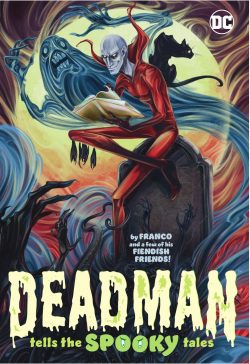

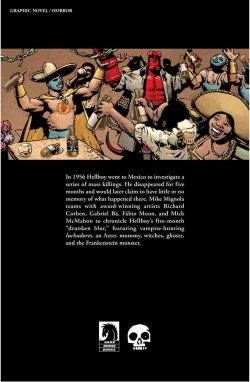
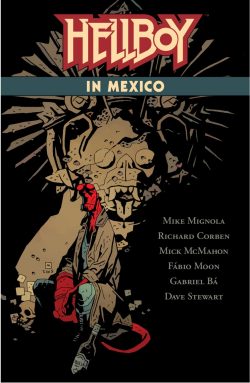

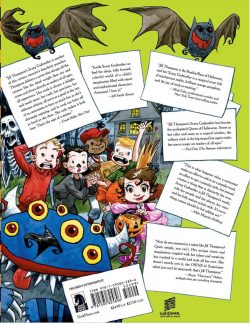
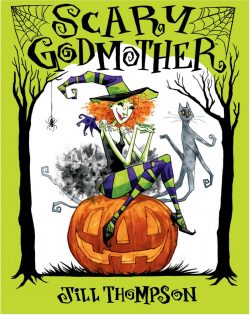
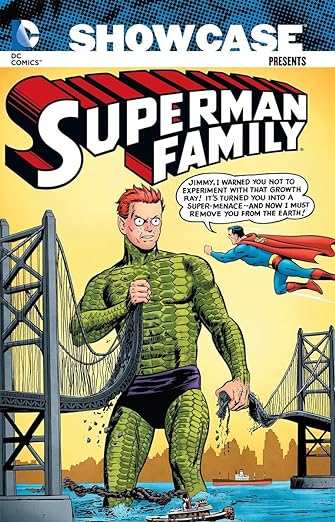
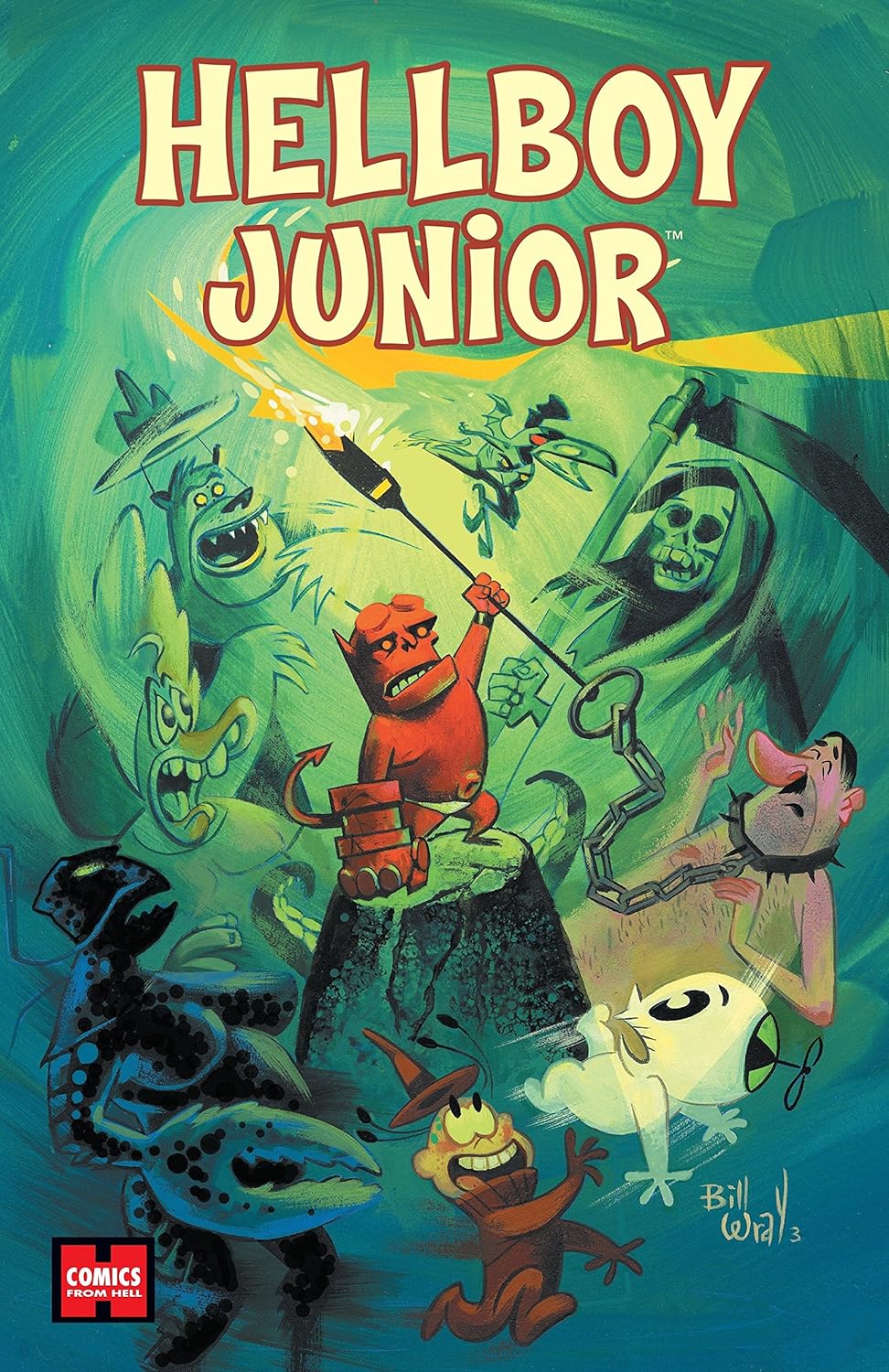
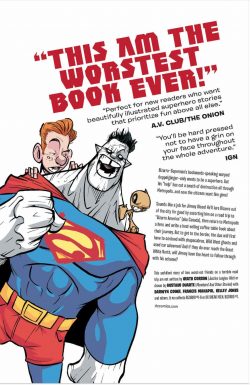
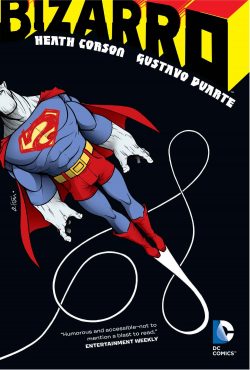
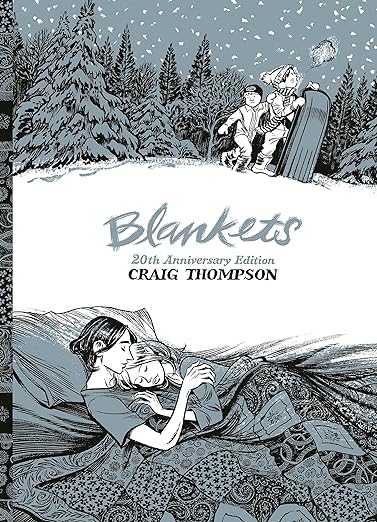
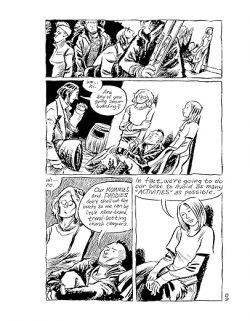 For such a weighty tome, Blankets is a remarkably quick and easy read, with Thompson’s imaginative and ingenious marriage of text and images carrying one along in the way only comics can. One of the most powerful and lovely tales of first love and faith lost, this book has lost none of its charm and seductive power over the decades. If you aren’t slavishly addicted to skimpily-clad incel-fodder or punch-in-the-face comics and have held on to the slightest shreds of your innate humanity, this is that rarest of beasts – a perfect story in pictures.
For such a weighty tome, Blankets is a remarkably quick and easy read, with Thompson’s imaginative and ingenious marriage of text and images carrying one along in the way only comics can. One of the most powerful and lovely tales of first love and faith lost, this book has lost none of its charm and seductive power over the decades. If you aren’t slavishly addicted to skimpily-clad incel-fodder or punch-in-the-face comics and have held on to the slightest shreds of your innate humanity, this is that rarest of beasts – a perfect story in pictures.